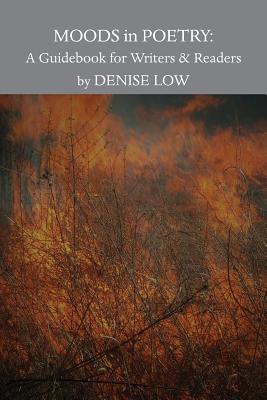From raging bull to trilling lark, poets assume many masks. This book explains how each poem (or lyrical prose piece) begins with an emotion and then finds its unique form in language. Moods in Poetry: A Guidebook for Writers and Readers, is perfect for workshops, classrooms, and individual writers. Beginning writers as well as advanced practitioners, and readers, will benefit from in-depth treatment of an essential element of writing.Thorough explanations of tone, voice, narration, and mood show inner workings of literary works. Each section presents extended definitions, suggested poetic forms, craft tips, writing prompts, and examples. Chapters cover spells, romance, sorrow, joy, awe, celebration, reflection, biofilia (love of nature), anger, depression, humor, whimsy, and occasional poems.These moods pair with certain forms, such as free verse, elegies, riddles, sonnets, and odes. Examples show traditions as well as innovations in forms. Model poems range from Sappho, the earliest Greek poet of the written language, to contemporary experimental poets. Review of Greek and Anglo Saxon origins informs discussion, and discussion of contemporary poetry practice. The author brings decades of experience from advanced creative writing classes (University of Richmond, University of Kansas, Haskell Indian Nations University) and professional workshops for adults. She is a former state poet laurate. Her recent books are from the University of Nebraska Press, Spartan Press, Red Mountain Press, Woodley, and others.

Moods in Poetry: A Guidebook for Writers and Readers
From raging bull to trilling lark, poets assume many masks. This book explains how each poem (or lyrical prose piece) begins with an emotion and then finds its unique form in language. Moods in Poetry: A Guidebook for Writers and Readers, is perfect for workshops, classrooms, and individual writers. Beginning writers as well as advanced practitioners, and readers, will benefit from in-depth treatment of an essential element of writing.Thorough explanations of tone, voice, narration, and mood show inner workings of literary works. Each section presents extended definitions, suggested poetic forms, craft tips, writing prompts, and examples. Chapters cover spells, romance, sorrow, joy, awe, celebration, reflection, biofilia (love of nature), anger, depression, humor, whimsy, and occasional poems.These moods pair with certain forms, such as free verse, elegies, riddles, sonnets, and odes. Examples show traditions as well as innovations in forms. Model poems range from Sappho, the earliest Greek poet of the written language, to contemporary experimental poets. Review of Greek and Anglo Saxon origins informs discussion, and discussion of contemporary poetry practice. The author brings decades of experience from advanced creative writing classes (University of Richmond, University of Kansas, Haskell Indian Nations University) and professional workshops for adults. She is a former state poet laurate. Her recent books are from the University of Nebraska Press, Spartan Press, Red Mountain Press, Woodley, and others.